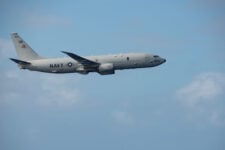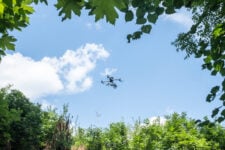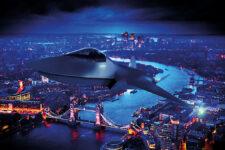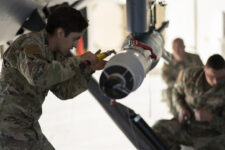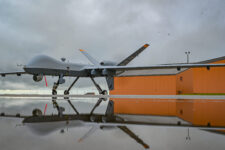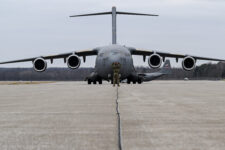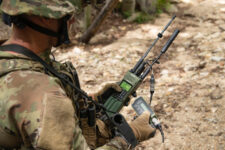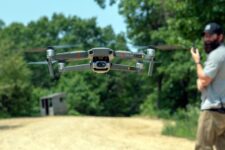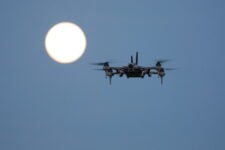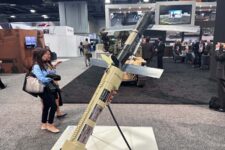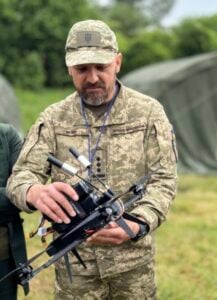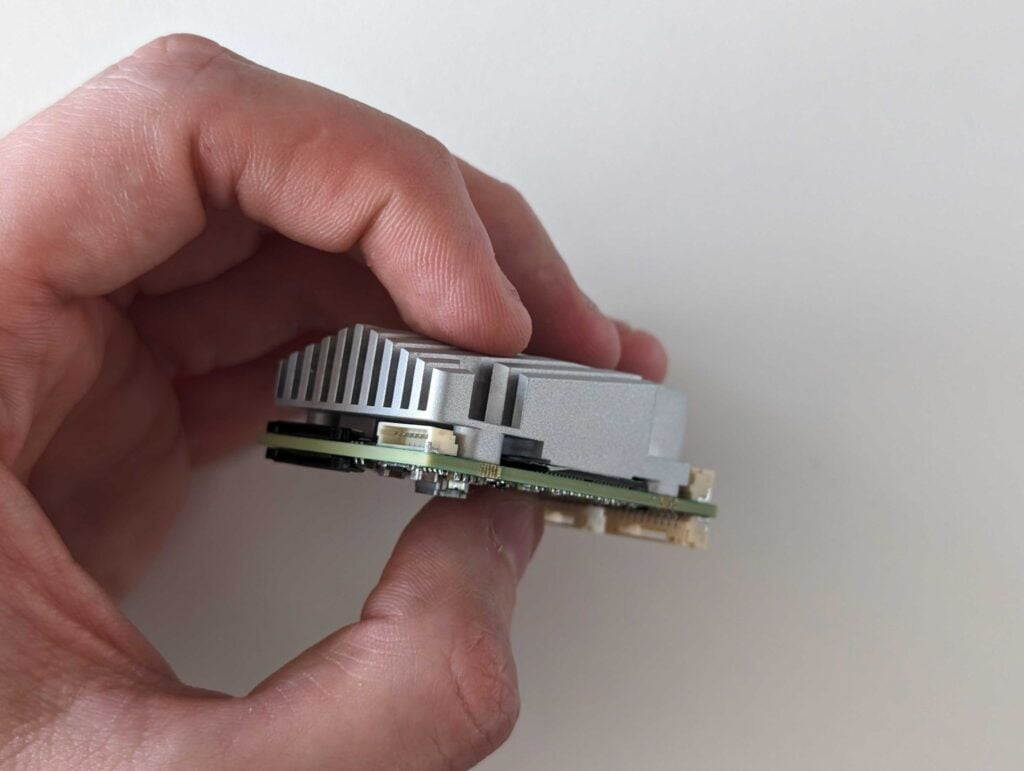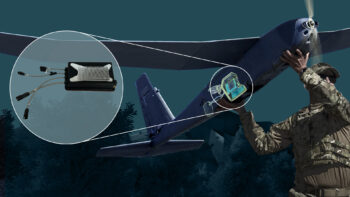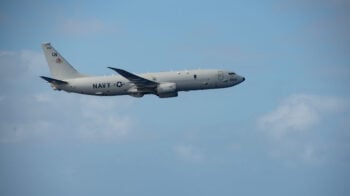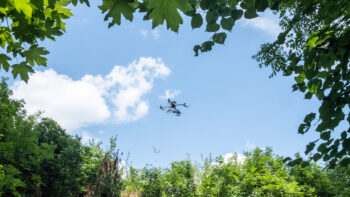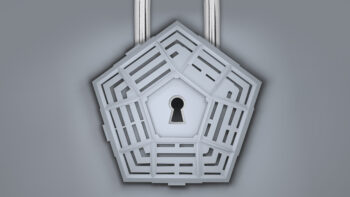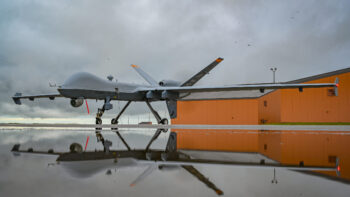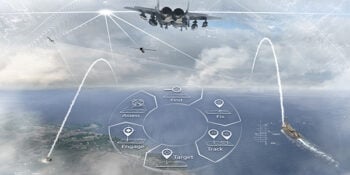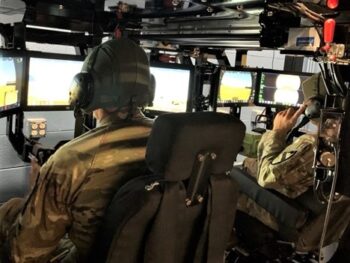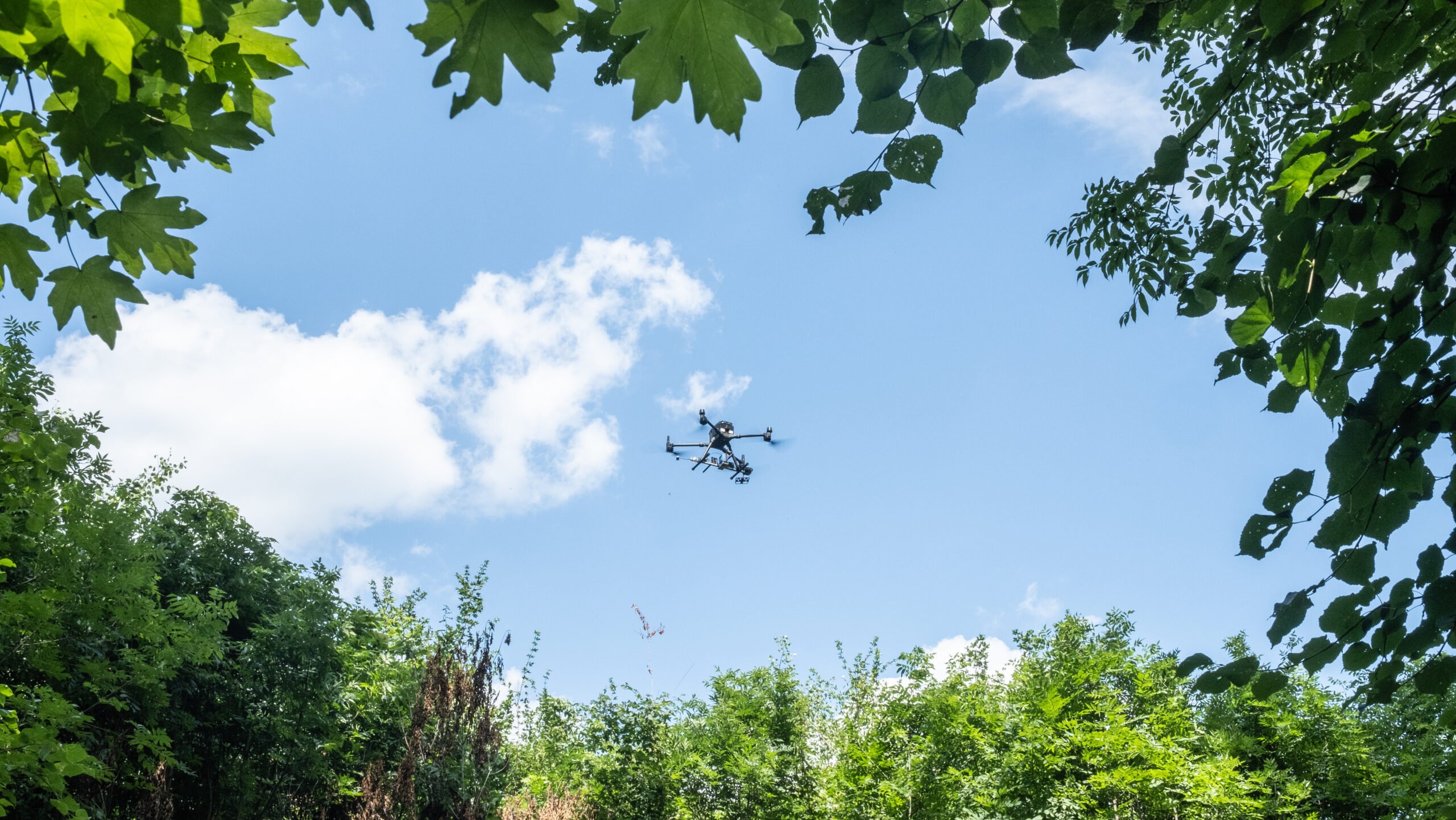
KHARKIV REGION, UKRAINE – JUNE 18: DJI Enterprise model drone that is used as an antenna to amplify the signal of FPV drones loaded with explosives that can hit Russian territory from this position is seen in Vovchansk district of Kharkiv region, Ukraine on June 18, 2024. (Photo by Pablo Miranzo/Anadolu via Getty Images)
WASHINGTON — The Ukraine war has shown the lethal power of drones. It’s also proven their vulnerability to even brief disruptions in their wireless links back to their human operators, with Ukraine losing thousands of drones a week to electronic warfare.
But now Auterion, a US-Swiss firm that works for the US, Britain, Holland and Ukraine, with production lines in Texas and Kyiv, says they’ve solved a big part of that problem. The company’s Skynode S upgrade kit, announced Thursday but already combat tested in Ukraine, is meant to make small drones smart enough to perform some crucial functions on their own.
“We’re not picking targets autonomously, because that is a whole new set of ethical considerations,” said Lorenz Meier, Auterion’s founder and CEO, in a call with Breaking Defense. You designate the target, [that] is a human decision, but everything from there is fully automated. … The whole terminal guidance is all fully automated and can’t be jammed, doesn’t rely on GPS, and also works on moving targets.”
Autonomous terminal guidance is a complex technical problem that the Russians have already tried — and, so far, seemingly failed — to tackle with their own Lancet drone. It matters so much militarily, for both sides, because the trickiest time for attack drones is often the final approach to their targets.
The fundamental physics problem is that small drones can only carry small amounts of explosives, so even a small mistake can mean a miss. But small drones — at least, ones without Skynode S — can’t perform precise maneuvers on their own: They need a human pilot flying them by remote control. That means an unskilled, exhausted or just unlucky operator can fumble the strike at the last minute. Or the enemy can force a fumble by jamming the control link, which requires less and less power as the drone gets closer and closer to the target.
To dispense with that human guidance, you need a drone with electronic eyes sharp enough, and a digital brain smart enough, to distinguish the designated target from the background clutter and home in on it autonomously. But while computers have gotten pretty good at identifying static images of cute kittens, puppies and consumer products, they have a harder time with three-dimensional objects, especially when they’re camouflaged, partially hidden behind cover, poorly lit, or moving.
Meier is emphatic that Skynode S has solved this problem well enough to give Ukrainian drones an edge in combat, without needing exquisite sensors or bulky on-board computers.
“It has been hard, and there were setbacks, and it was a very intense six months to get to this point,” he told Breaking Defense. “[But] we’ve made sure that we have a really, really good computer vision tracker” that can follow the designated target “even if it moves, if it turns, if anything changes.”
Open Architecture: The Path To Infinite Upgrades
SkyNode S also allows drones to navigate accurately over long distances when GPS is degraded, jammed or otherwise unavailable, Meier said. The same circuit board that runs the target-tracking algorithm can also be linked to jamming-resistant GPS antennas, electromagnetic sensors that triangulate the drone’s position off radio beacons and computer vision algorithms that match the terrain below the drone against high-res satellite maps.
None of this means the drone can identify and choose its own targets, Meier emphasized. That’s a much more complex problem, not only technologically but legally and morally.
However, the company is working on an electronic warfare upgrade to Skynode S that, instead of using computer vision to track targets, would home in on radio and radar signals. It should be possible to program such an EW drone with a library of distinctive enemy transmissions, then launch it in the general direction of a radar, jammer or communications node with the order to find and kill it.
Such “Homing Anti-Radiation” capabilities have existed in high-end missiles systems since the 1980s, as with the American AGM-88 HARM. But putting them in much cheaper drones could proliferate them dramatically across the battlefield, at least at shorter ranges.
Remarkably, all these capabilities run off an electronics card smaller than a human hand, as Meier demonstrated by holding one up during his video call with Breaking Defense. “I have one of these avionics units here, so you see … it’s ridiculously small.”
These cards are also adaptable enough that they can be installed on drones from multiple manufacturers and run apps developed by other companies. This design approach is known as Modular Open Systems Architecture (MOSA), where different companies agreed to common technical standards so their software applications and hardware components can plug-and-play together.
“We’ve done a lot of MOSA for real, in real systems, with real things that deploy,” Meier said. “We’ve built an app store. [It’s] the Android of drones.”
The openness of the system was put to the test in a recent hackathon in Poland run by the Pentagon’s Defense Innovation Unit. Teams from more than a dozen different companies and universities were able to whip up navigation apps to run atop Auterion’s operating system and field-test them on real drones.
In fact, DIU’s Blue sUAS program — a curated list of small unmanned air systems approved for military use — uses Auterion open-source software and the MavLink communications protocol that Meier developed as a graduate student in Zurich before founding Auterion. That makes it easier for Auterion to work with other companies from many countries.
“We’re working with American drone companies, European drone companies, and Ukrainian drone companies,” he said. “We’re powering systems in DoD inventory, in Dutch inventory, in British inventory.”
When Meier began working on autonomous drones back in 2008, “that was in a more peaceful world, where I was personally focused more on disaster recovery and urban navigation,” he told Breaking Defense. “But since then, the world has become a more dangerous place, and the freedoms that we’re taking for granted need to be protected.”
“There is a moral obligation to not withhold our technology from defense,” he said. “If we feel we make the best operating system for drones, it would be the wrong thing to withhold it, even from lethal applications.”
P-8 LRASM testing expected to wrap this summer, Boeing official says
Boeing will also soon begin flight testing a multimission pod developed with internal funds, according to company official Jon Spore.
